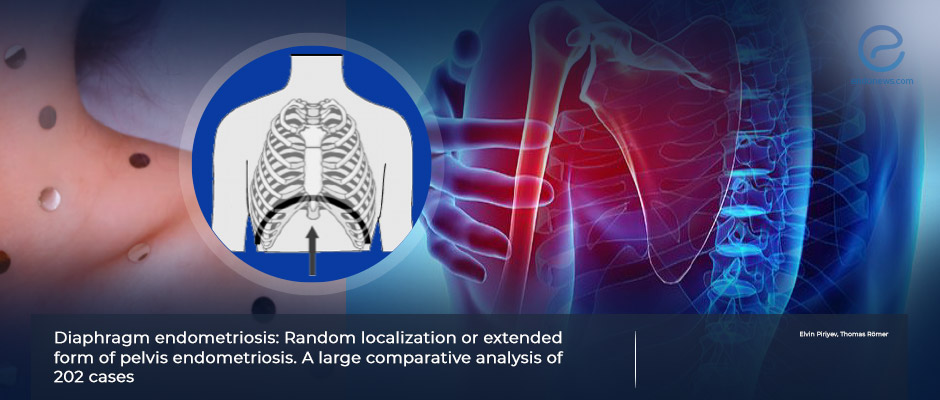New visions on diaphragmatic endometriosis
Feb 14, 2024
Analysis of diaphragmatic endometriosis cases reveals more frequent involvement on the right side
Key Points
Highlights
- Although 7-10% of reproductive-age women have endometriosis, diaphragm involvement is estimated to be around 1.1 % among them.
Importance
- The precise pathogenesis of diaphragm endometriosis and the question of whether this involvement is an extended form of pelvic endometriosis have not been clarified yet.
What's done here
- This study is a retrospective comparative study, derived from the data of an Academic Hospital between January 2016 and October 2023.
- Two sets of patients, one with diaphragm endometriosis; and the control group, patients with pelvic endometriosis were attained, with 101 cases in each.
Key features
- The most important symptom of diaphragm endometriosis is shoulder pain, especially on the right side.
- Fifteen percent of patients in the diaphragmatic endometriosis group reported cyclic shoulder or upper abdomen pain.
Take home message:
- Patients with pelvic endometriosis should be routinely asked about their cyclic shoulder or upper abdomen pain.
Lay Summary
Elvin Piriyev and Thomas Römer from Academic Hospital Cologne Weyertal, Germany have published their retrospective analysis of diaphragm endometriosis in a recent issue of the European Journal of Obstetrics and Gynecology.
About 7-10% of reproductive-age women have endometriosis but diaphragm involvement is estimated to be around 1.1 % among these patients. Diaphragm endometriosis frequently accompanies pelvic endometriosis and may either be symptomatic or asymptomatic. The authors aimed to investigate and present the clinical characteristics of diaphragm involvement, and to reveal whether it is an extended pelvic endometriosis subset.
This retrospective observational study, from Academic Hospital Cologne Weyertal included 202 patients. Two groups were compared; one consisted of patients with diaphragm endometriosis and the other, control group, patients with pelvic endometriosis.
The diaphragm involvement group had a significantly higher prevalence of severe pelvic endometriosis with deep infiltrating endometriosis properties besides complete Douglas obliteration. There was no age or BMI difference between the two groups. A previous report claimed that diaphragmatic involvement patients are usually 5–10 years older than pelvic endometriosis.
A considerable number of patients in the diaphragmatic endometriosis group, 15%, reported cyclic shoulder or upper abdomen pain, especially on the right side. This finding suggests that clinicians should ask pelvic endometriosis patients about these symptoms.
Severe concomitant pelvic endometriosis is suggestive that diaphragm endometriosis could be an extension of pelvic involvement. This raises the question of any particular pattern or pathway for this extension, which necessitates further research on the topic.
Research Source: https://pubmed.ncbi.nlm.nih.gov/38237309/
diaphragm shoulder pain deep endometriosis diaphragmatic endometriosis

